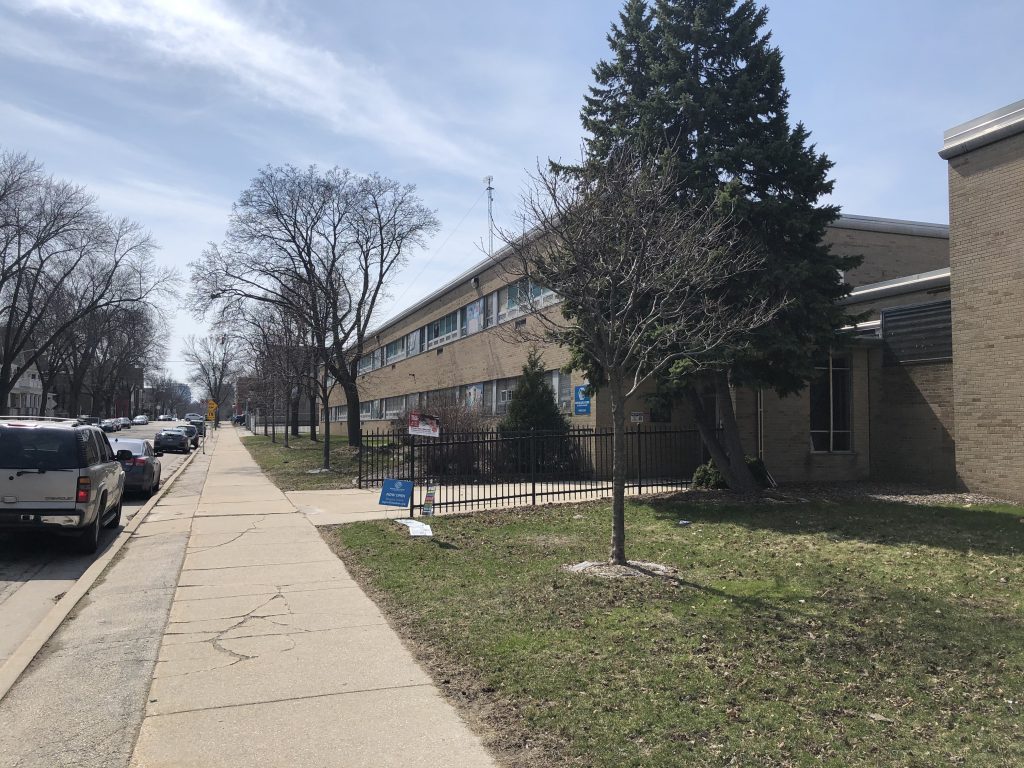Median Wisconsin Teacher Pay Down 12% Since 2009
Inflation and austerity have resulted in Wisconsin educators effectively getting paid less.
Teachers in Wisconsin’s largest school districts received raises this year that were higher than they’ve seen in a decade.
But despite that hike, the median pay for teachers has fallen more than 12 percent since 2009 when adjusted for inflation, according to a new report by the Wisconsin Policy Forum.
Peggy Wirtz-Olsen, president of the Wisconsin Education Association Council, said teachers aren’t feeling the raises they’ve gotten in their pocketbooks.
In 2009, the median pay for Wisconsin teachers was an inflation-adjusted $67,536. In 2023, the median wage for teachers in the state was $59,250, a decrease of $8,286, the policy forum report found.
“You know, this has been going downhill for a long time,” Wirtz-Olsen said. “And not being able to keep up with inflation in terms of teacher pay is absolutely a factor that led to the vacancies we see and the shortages across Wisconsin.”
School districts across the state are facing a double-edged sword, struggling to attract and retain teachers while maintaining their finances, said Sara Shaw, a senior researcher at the Wisconsin Policy Forum and author of the report.
This year, school districts were allowed to raise base wages up to 8 percent — the inflation rate at the time the school budgets were finalized. And many, including Milwaukee Public Schools, the Madison Metropolitan School District, Racine Unified School District, and the Green Bay Area Public School District, did. Others, like Kenosha Unified School District, the Sheboygan Area School District, and the School District of Waukesha, passed budgets limiting base wage increases to 4 percent, which provided partial cost-of-living adjustments with smaller price tags.
But school district revenue limits, set by the state Legislature, increased about 2.7 percent.
“So right away, you’ve got an issue,” Shaw said. “There’s a mismatch between the amount districts could increase and how much money they’re receiving. That gap then gets exacerbated by what has historically been happening, which is over the last 15 years, we generally see revenue limits, not keeping pace with inflation.”
Wisconsin’s public schools are funded primarily through a combination of local property taxes and state support in the form of general school aids, which are calculated based on property value in the district, enrollment and district spending.
Shaw said every year, a school district faces trade-offs between supporting staff and students, balancing the budget and protecting taxpayers. Paying teachers fairly and at levels competitive with other districts and the overall labor market is critical, but wage increases also drive future costs for districts and must therefore be considered against projected revenues, Shaw said.
From 1999 to 2009, revenue increases were tied to inflation. That provision was removed from state statute, and changes to revenue limits have since largely lagged inflation, Shaw said.
In the 2021-23 biennial budget, revenue limits were not increased. This year, in a surprise partial-veto from Gov. Tony Evers, school districts were given the ability to collect an additional $325 per student annually for the next 402 years.
That amount was still about $75 less than the inflation rate at the time, which was 4 percent.
Gross median wages for teachers fell in 2012, following a wave of retirements the year after the passage of Act 10 and the loss of collective bargaining.
Act 10 required teachers to pay greater health care and pension contributions, lowering staff compensation, but helping to balance school budgets.
At the same time, declining student enrollment tightened school budgets. Since 2016, school districts have increasingly turned to referenda asking voters to increase local property taxes beyond their revenue limits.
Shaw expects to see more referenda in the future.
A recent report from Forward Analytics, the research division of the Wisconsin Counties Association, found referendum-approved dollars funding K-12 schools has grown from $32 million in 2000 to $180 million in 2010 and to $650 million in 2023.
Of Wisconsin’s 434 unique school districts, 82 percent have sought a referendum, the Forward Analytics report found.
“I don’t think the lawmakers who created this law envisioned referenda being relied on this much,” said Forward Analytics Director Dale Knapp. “Maybe the answer after 30 years of the limits is an in-depth review of the law to see how it can be improved to continue protecting taxpayers and ensure adequate funding of our schools.”
Wirtz-Olsen said the school funding formula in Wisconsin is complicated. But she thinks the first thing that needs to happen is educators’ right to collective bargaining needs to be restored, which would require overturning Act 10.
“Secondly, we need to stop the unconstitutional funding of private schools with tax dollars, because all that’s doing is raising our local tax bills,” Wirtz-Olsen said.
Wisconsin teacher pay hasn’t kept up with inflation in more than a decade was originally published by Wisconsin Public Radio.























Wisconsin is heading towards an apocalyptic teacher shortage. It is well documented that enrollment in teacher preparation programs is down. This article documents that teacher pay continues to drop. Now conservatives promote a “parents rights” bill that would give parents the right to sue teachers if some topic is taught that they disapprove of with MAGA law firms like WILL ready to help. Teachers in some districts run by conservative school boards are encountering scripted lesson plans that reflect right wing talking points with disciplinary threats if they are found deviating from the script. The Republican solution will be similar to what Senator Knodl from Washington County has proposed which would let school districts put employees without college degrees into teaching positions. With these conditions, many potential teaching candidates will choose other professions.